On-Demand Food Delivery App Development: Features, Models & Challenges
The users can go through a wide range of restaurants with ultimate cuisines and found the payment methods highly flexible. Hence, digital reforms are completely transforming the mechanism of online food delivery. Customers are getting used to ordering foods through these apps rather than waiting at the restaurants for their orders.
Due to this revolution in the consumer-behavior, many food retail chains, restaurant owners, eateries, etc. have also started introducing their delivery apps just like Dominos for providing better services to their customers. In this article, we are going to learn about on-demand food delivery app development, their models, how they work, their complexity.
Food Delivery App Models:
There are two main types of Food Delivery App Models:
Aggregator Food Delivery Apps:
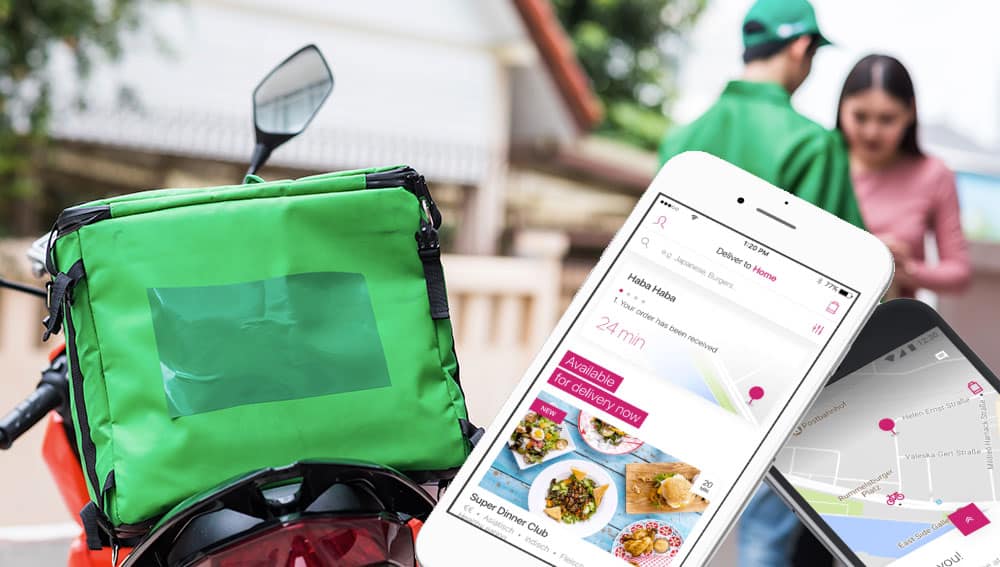
In the aggregator food delivery apps model, the app owner needs to collaborate with the local restaurants and eateries. It is preferable for those people who are either having their own restaurants, or having a chain of eateries, or can easily tie-up with the other restaurants. In these food delivery apps, the restaurant owner can also decide to collaborate with your seeing your app popularity & business. The customer will go through the list of restaurants and can decide from which restaurant he wants to make an order and what item.
The complete mechanism, from order fulfillment to delivery, is of the store, while you will act just as a serving as a mediator between the restaurant and customer.
Dedicated Food Delivery Apps:
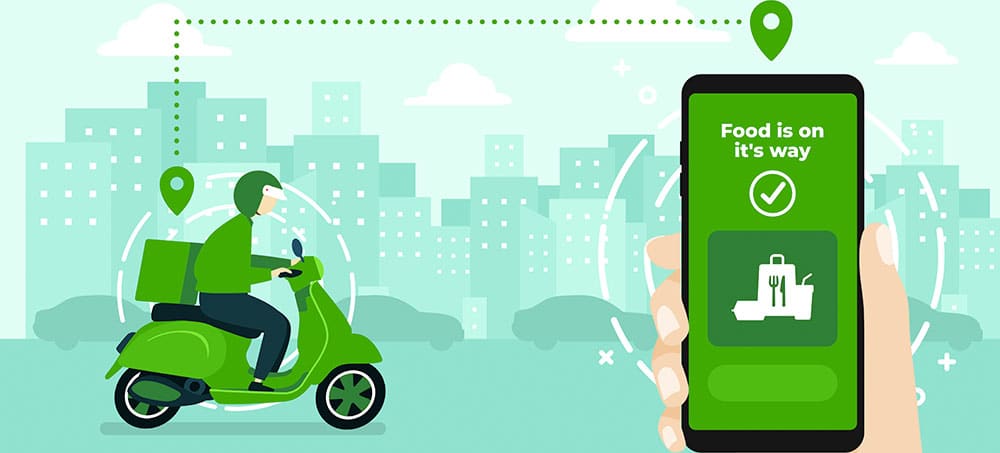
The dedicated food delivery apps come with all the features of the aggregator apps, however, is a dedicated model, the app administration would be responsible for managing the complete order cycle. In easy words, many restaurants owner will sign up on your app, list their dishes, and will start taking the order. The admin should have its own fleet of delivery executives. Your main task would be to facilitate order placement, picking up the order, and deliver it to the customers. In this model, the admin has more responsibility as he is completely in charge of every step.
Features of a Food Delivery App
The trinity of these apps makes a perfect food delivery platform. Without one app, the other has no useful value. Let’s discuss how each kind of food delivery apps are being used and what features you need to include to make them perfect.
Features for the Customer:
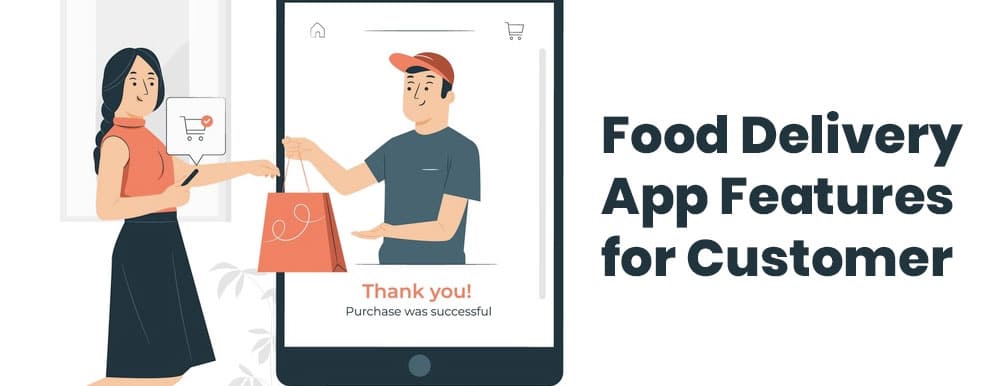
The features of the customer should be highly easy to use. At this end, the customer would make orders, search for his favorite restaurant, and order the dish he wants to order, place the order, and pay easily. The main features of the food delivery app your customer needs.
1. Registration & Profile Creation:
This is the first most step for the customer in the app. Consider only basic & essential details to be entered by the user, such as Name, Address, contact number, Social media registration, etc. The registration should be highly smooth & easy for the user, and not complicated like the user is filling a passport form.
In the Profile management, the user would be able to edit his settings such as address, preferences, and others.
2. Easy Searching for Food:
This is the second most important feature. A starving user couldn’t wait to find scrumptious food and then order it. After logging in and profile customization, the user is going to look for what they should eat. The best way for searching is to first show the nearby restaurants organized by type of food, food preferences like vegetarian, non-vegetarian, vegans, continentals, etc. Thereafter, you can also add filters like reviews & ratings, discounts, the cost for two, etc.
3. Going Through Restaurant Profile:
When the customer will decide to which restaurant he wants to do an order, he would definitely want to check out the restaurant profile. The customer must want to know what food items are available at the restaurant, its location, reviews, and ratings. So make sure to add this feature to your food ordering mobile application development.
4. Adding Food to Cart:
Adding food to the cart also plays an important role in the user flow. Changing the quantity of the same item should be highly easy. From our point of view, this feature is quite cumbersome in Swiggy, especially when the item is customizable. And it depends on you whether you want to allow the customer for adding items from multiple restaurants in a single order or not.
5. Delivery Person’s Contact Info:
When the delivery executive gets assign to the order delivery, you should provide the customer with the contact information of the delivery person. This way they will have an easier time to contact the delivery guy and get the information about where they are and how long it’ll take for them to deliver.
6. Easy Payment:
Payment is the ultimate part of the app’s business. You should include multiple payment options for the ease of payment. Find out what is the most preferred payment method adopted by the user. Also, add the functionality of saving their card or UPI details for easiness in the future. Make sure that if they choose to pay online, their online payment information should be safe and secure. Any compromise to this security can cause them significant harm and in return, your reputation can suffer.
7. Order History:
It seems unrealistic, but order history is also a necessary feature for a smart food delivery app. Order history helps the user to check which was the restaurant from whom they earlier did an order. It is convenient for placing similar orders without searching again and again. It also lets the customer check the rates and bills of previous orders.
8. Real-time Food Tracking:
The hardest thing to do after making an order is to wait. But a real-time food tracking will not make it unbearable for the users. With this feature, the user can easily track their order and what is its status. This will make them less annoyed during the waiting.
9. Review & Rating the Food:
The customers should allow to rate & review for the food items they have ordered. This is a well tested and amazing way for them to let the other users know how good each restaurant is and whether they should order from there or not.
Additional Features you can Include:
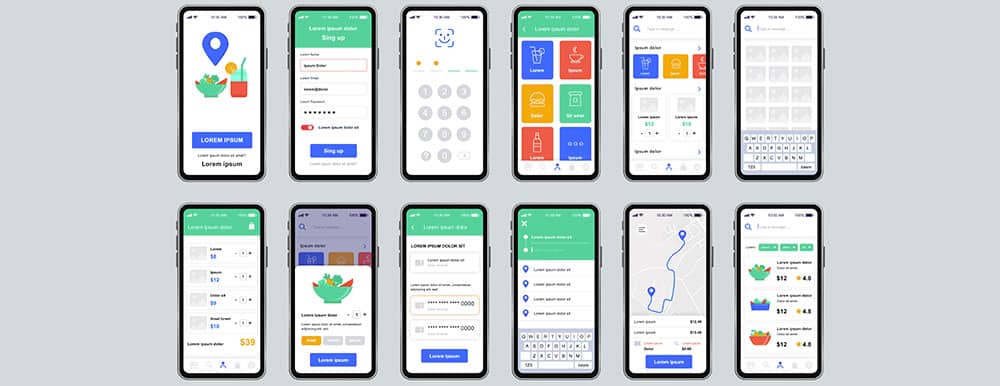
1. Offers, Promo Codes, or Discounts:
Discount has always been a fantastic way to captivating the users. You can provide coupons, discounts, promo codes which the users can add in the Promo code section for availing exciting discounts. At the initial level, it can help you to gain a wide pool of customers.
2. Push Notifications:
It is quite a double-edged sword feature, as the features can also find notifications helps but also many irrelevant notifications annoying. So make sure to also add another neat feature that will enable them to control the frequency of the notification they are going to receive.
Features for the Restaurants:
This is the second part of the food delivery application which is going to be used by the restaurant owners. This module requires a few important features. These are:
3. Registration and Editing Profile:
Like the customers, the restaurant owners would also be able to register on your portals with their details like restaurant name, address, menus, prices, any special offers, etc. After the complete registration, they can begin to take the orders.
4. Accepting Orders:
The restaurant would start accepting the orders in their working time, and can even refuse to accept the orders in some situations like poor weather, disaster, not enough supply, etc.
5. Dashboard:
The dashboard is a very important feature for the restaurant owner. It will help in managing your restaurant. The owner would be able to see all the orders and deliveries and payments. This is going to make business management easier for them.
6. Managing the Orders:
The restaurants would be also given the feature in which they can update the status of the orders placed by the user such as cooking, packaging, given to courier service, etc. Along with that, the order history is another side of this feature that can be useful for the restaurants using the admin panel.
Additional Features:
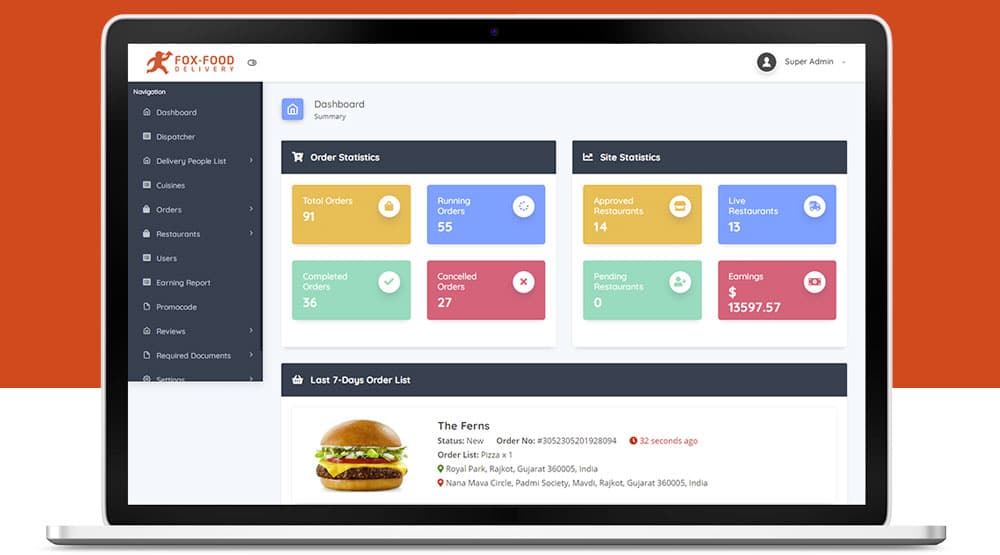
1. Accounts & Management:
The restaurant owners would be able to manage and edit the payment methods and financial accounts on their portal. It is going to be a proper way for them to handle the revenues gained from the app and its customers.
2. Loyalty Campaign, Offers, And Deals
The restaurant owner portal is the right place for loyalty campaigns and such offers. You can create loyalty programs for long time restaurant partners and give them special offers such as promoting them on the platform, other perks, etc.
3. Analytics
Analytics will help the restaurants’ owners know all about how much they are earning from the online food delivery app, how many customers they have, how many orders they are getting daily, etc. the analytics is going to get them a clear view of the business and help them keep an eye on everything.
4. Features for Delivery Boys:
This is the last part of the app which is going to be used by the delivery boys. There are a few functions which are required in this part:
5. Registration and Creating Profile:
The delivery boys are also required to register in the app as well. They would be required to provide verification details for security purposes. Once they are verified, they can start receiving orders and delivering them.
6. Managing Orders:
By this feature, the delivery persons can check whether they have any current orders to deliver or not. They also can accept or reject the order requests.
7. Navigation and GPS Tracking:
This is the most important feature for a delivery boy because he would be able to find out the location by the navigations. They would be able to find out the location with an in-built navigation system in the app.
8. Updating Status:
After getting the order, the delivery would be able to update the status, such as Order has been picked up, the order has been delivered, delayed, etc. As soon as the delivery boy updates the status, the customer will get a push notification for a smooth flow.
9. Delivery History:
Delivery History will help the delivery boy to check his record of all the previous deliveries and payment information. They can check how much the payment from each customer they have collected.
10. Reviews & Ratings:
This feature allows the delivery boys to give reviews & ratings to the customers. It can help the Admin panel to know more about its customers for taking any future decisions such as refund, replacement, etc.
Complexities in a Food Delivery App:
With great features there come the great challenges also with an on-demand food delivery app development. In a food delivery app, the most challenging feature is to implement the geo-location feature for the customer, as well as the delivery partner. The delivery part is also quite challenging where the customer gets his order in the minimum possible, the delivery boys also don’t need to go too far for picking and delivering the order, and all these happen with the real-time tracking.
As soon as the customer opens its app, the GPS or geo-location features begin to work. The customer is shown those restaurants which are nearby to him, from which the food can be delivered within a stipulated time like 45 minutes. It is the first challenge in the app. At that time, when you order food, you are also given an estimated time forgetting that food, which equals to preparation time + time in which delivery executive will reach the restaurant + time taken by a delivery boy to reach your place.
The preparation time also depends on various factors like types of items, number of items, current load at the restaurant. After this, the tricky part is to find the delivery executive, and the worst thing in peak times the delivery executives get busy, hence it can take much longer to find a delivery executive who can fulfill the order. Lastly, what if the Delivery Executive whom we have reserved, rejects the order?
On-demand food delivery app development has to go through a bunch of problems. We, at Amplework, are having expertise in delivering such on-demand food delivery apps development.



 sales@amplework.com
sales@amplework.com
 (+91) 9636-962-228
(+91) 9636-962-228





